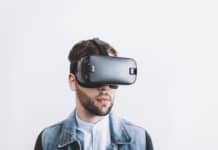 Creating welcoming, barrier-free meetings and incentives should be a top priority, but many organizations forget to plan for the diversity they seek.
Creating welcoming, barrier-free meetings and incentives should be a top priority, but many organizations forget to plan for the diversity they seek.
In this Shakedown, Matthias Schultze, managing director of the German Convention Bureau (GCB) weighs in on how meeting planners can achieve more accessibility at meetings and what things to consider when picking a truly accessible meeting destination or venue.
Why has meeting accessibility been such a focus for the GCB?
At the GCB, we strongly believe all meetings, conferences and exhibitions are powerful platforms for knowledge exchange, and in turn, we also strongly believe that everyone should have the right and ability to contribute to and get involved in that knowledge sharing. Because of this, barrier-free meetings are a core part of our sustainability and CSR strategy. Why should a person who has challenges walking, hearing or seeing be precluded? What about young parents traveling with their children or someone with life-threatening food allergies—should they have barriers to meetings where they could learn, network and contribute innovative ideas to their industries? We don’t think so and feel it is our duty and the duty of the German meetings industry to break down barriers wherever and whenever we can and welcome all.
What are specific ways you’ve initiated that conversation and worked to achieve more accessibility within the meetings industry throughout Germany?
We work hard and regularly with our members—who include hundreds of venues, transportation providers, congress centers, caterers, hotels and more across Germany— to communicate that truly inclusive and barrier-free meetings are the strongest, most high-quality meetings we can create for everyone who attends our events. This communication takes the form of webinars, meetings, seminars and whitepapers. Many of our members are already doing excellent things in accessibility and barrier-free meetings, but others are just digging into it, so it’s important that we showcase examples that are working in Germany, too.
For example, the GCB is involved in and helps tell the story of SightCity, the largest conference and exhibition for blind and visually impaired people in Germany, held annually at the Sheraton Airport Hotel. Here attendees experience aids and technology advances that assist with daily life, work and mobility. They also get information on travel services and tours geared for those with sight challenges, and gain powerful insights from leading speakers on new medical developments. The show is a great example of barrier-free meetings in action, with braille signage, free guides and transportation right from railway platforms to the event, rent-a-guide options for one-on-one help, water stations for guide dogs, illuminated room signage, tactile paving and floor guiding lines.
What should meeting planners first consider in an effort to make their own events more accessible?
First of all, planners and their clients or in-house management teams need to start thinking about barrier-free meetings as not just doing a few specialized things for a few people, but rather as a way to raise the bar on the overall experience for everyone at their events and conferences. Attendees, sponsors and exhibitors—challenges or not—want to increasingly be part of something led by socially responsible and authentically caring organizations, and barrier-free meetings are one great way to embody that.
Secondly, it is important to have a really clear picture of what the actual barrier-free needs of your attendees, exhibitors and speakers are in advance. You can gather this through reviewing data or anecdotes from past attendee experiences, directly surveying prior and future attendees, and building in feedback and request mechanisms on barrier-free needs at event websites and via the registration process. This helps you with under or over planning.
Thirdly, it’s important that you appoint one person or a small team of people to truly own and champion barrier-free needs and solutions for your organization or event. This person can begin by gathering the true needs of your attendees, exhibitors and speakers. Then they can help identify venues, destinations suppliers and partners that understand and can meet barrier-free meeting needs without any additional investment from you. They will also shepherd gathering and understanding barrier-free requests at the point of registration and be a single point of contact on positive and negative feedback and actions required to address the quality before, during and after the event.
What are some questions you recommend asking destinations, venues and hotels during the planning process?
We recommend you ask your country- or city-level CVB what supports and offerings are already in place for barrier-free meetings at the destination. Which venues, service providers or hotels are most sensitive to this and have solutions in place already? What is the transportation infrastructure coming in and out of the location via plane and train, and what is it like getting around town? What are some of the local leading shows or experts that can serve as strong examples and sources for barrier-free ideas as needed?
Then, ask venues, convention centers and hotels and suppliers what they are doing to be more barrier-free and inclusive of all. How is their staff trained to help, and do they have a go-to person for barrier-free questions and needs management? What tools and technologies are already in place onsite. Are there voice prompts and braille on elevators people can leverage? Are there audio-induction loops that link with people’s wireless hearing aids for speeches, sessions or performances? What about accessible shuttle buses or other transportation services to and from the venue? What are they doing to address food allergies? Are there skilled child care services available on site or nearby? Do they have interpretive technologies, speech to text apps or services? What is their wheelchair or impairment access plan especially at main entrances, reception areas and between floors and how about getting on and off a stage for speakers or performers?







